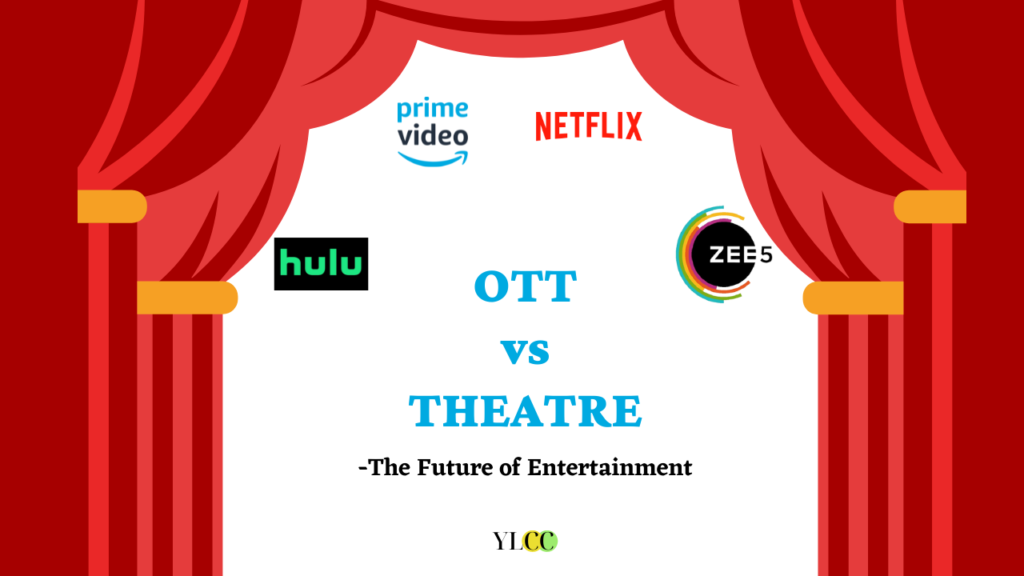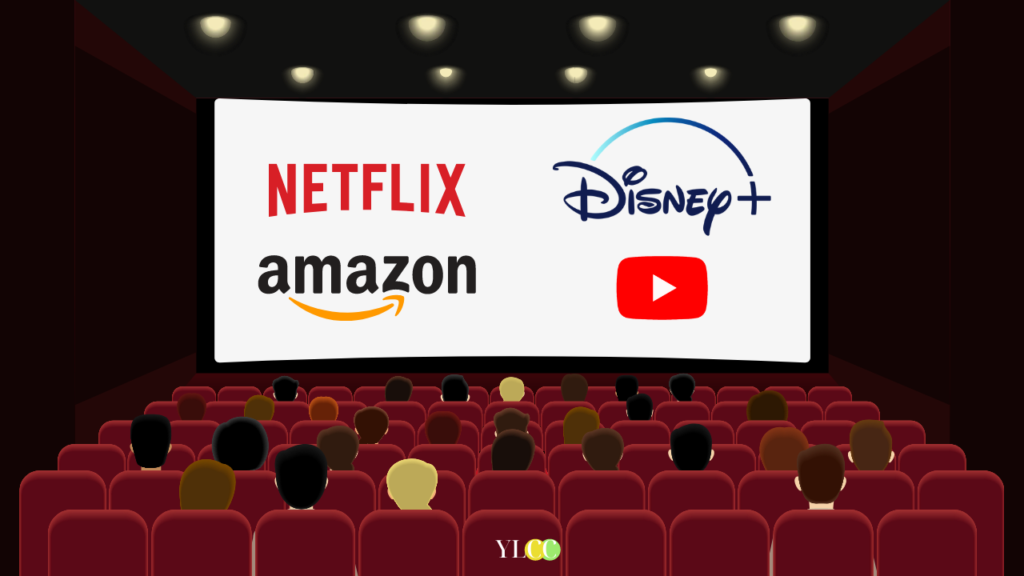
For as long as we have known, watching movies in theatres have been one of the most favourite sources of entertainment across all age groups. However, with the advent of Over-The-Top platforms, this notion has been challenged. The conflict was further augmented by the Covid-19 pandemic which resulted in indefinite theatre closures across the globe for several months.
In this article, we shall study the pros and cons of both OTT and theatres and analyse the impact of the former on the latter. Read on!
What is OTT (Over-The-Top)?
An “Over-The-Top” media service is any online content provider that offers streaming media as a standalone product. The term is commonly applied to video-on-demand platforms, but also refers to audio streaming, messaging services, or internet-based voice calling solutions. OTT services circumvent traditional media distribution channels such as telecommunications networks or cable television providers.
As long as one has access to an internet connection — either locally or through a mobile network — he or she can access the complete service at your leisure. OTT services are typically monetized via paid subscriptions, but there are exceptions. For example, some OTT platforms might offer in-app purchases or advertising.
Pros of OTT
- OTTs are game-changers in terms of flexibility and convenience. One can log in at any time of their choice from any device- television, mobile phone or laptop.
- For all practical purposes, OTTs have solved the issue of accessibility. For people living in Tier-II and Tier-III cities, where number of theatres are very less, it has now become extremely easy to access good quality content. Similarly, people suffering any illness or disability who found it difficult to visit theatres can now watch content from the comfort of their homes.
- Viewing options in OTTs often provide for audio and subtitle options in different languages, which makes it possible for the audience to view and comprehend content in a variety of languages.
- OTTs have revolutionized the entertainment industry in several ways. For example, small movie makers who make quality content but do not have a large budget for promotions can now collaborate with OTTs to reach a much larger audience.
- Prior to the success of OTTs, Bollywood and other film industries had started to come under heavy criticism for making the same old monotonous movies characterized by sub-par scripts and poor acting. However, OTTs have changed the scenario by making original content that have quickly impressed viewers and left them wanting for more.
- For individuals who binge content on a regular basis, OTTs are largely cost-effective. For example, a movie in a theatre costs perhaps 200/- INR. On the other hand, for a mere 600/- INR worth OTT subscription per month, one can watch an unlimited number of movies, television shows and more.

Cons of OTT
- For people who seldom watch movies, OTT subscriptions can be quite expensive.
- OTTs have definitely helped the cause of access, but not entirely. Even today, many people in India do not have access to a smartphone, laptops or such devices. In such cases, people will have no choice but to go to theatres.
- Perhaps the biggest downside to the growth of OTTs is the fear of theatres shutting down which will lead to a loss in jobs. Multiplex chains like INOX and PVR have for years provided employment to hundreds of workers and invested significantly in infrastructure. If people no longer go to theatres, these jobs will cease to exist and there will be no returns of the investment in the infrastructure.
- Previously, the primary source of income for movie-makers was the proceeds from the theatre ticket sales. During the pandemic, where releasing the movie on OTTs was the only viable option, revenue and profit were significantly reduced for such producers as OTTs acquire broadcasting rights at a much lesser price. If this continues, the movie-making industry can be financially affected.
Pros of Theatre
- Going to watch movies in big screen theatres is an altogether unique and immersive experience which cannot be possibly replaced by OTTs.
- Theatres provide employment to a number of skilled and unskilled workers.
- Going to theatres is often not just about watching a movie, it is rather about enjoying a day out with your friends or family.
- 3D or 4D movies can be experienced and enjoyed only in theatres which has the infrastructure to support such movies.
Cons of Theatre
- Theatres cannot function during pandemics and other similar situations. Even in a post-pandemic situation, people are wary of visiting theatres because of the number of people.
- Theatres are much more expensive for people who regularly consume content. A much cheaper solution would be opting for OTTs.
From the above analysis, it becomes clear that both OTT platforms as well as theatres have their own distinct advantages and disadvantages. However, even with the growing popularity of the former, it will not be easy to eliminate theatres from the picture altogether for a long, long time. At least in India, one can say that the ideal scenario would be for theatres and OTTs to co-exist and provide the viewers options to choose from depending on the occasion.
YLCC would like to thank Sachet Labroo for his valuable inputs in this article.






